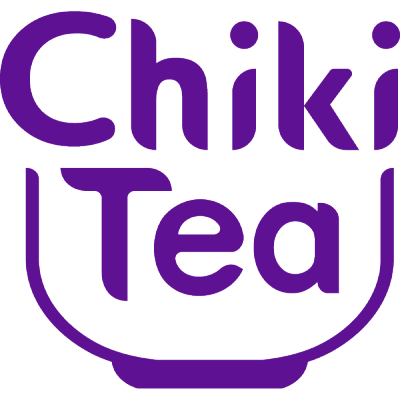A very special visit from Mr Gyokuro
- Holly Helt

Once in a while, a ROCKSTAR producer emerges such as our latest visitor from Yame in northwest Kyushu, whom I first met at the Oita Tea Auction a few months back.
You tend to find that the real artisans pride themselves in producing one tea in particular. It’s true, most of them will produce a range of Sencha, Fukamushi, Houjicha, maybe Kabusecha, etc… But the ROCKSTARS tend to pick a tea from their range, hone it and promote it as their signature piece. We see this with our Matcha farmers (also from Yame), and our Kabusecha producer down in Kagoshima. And of course, you see it in other prime examples from around rest of the country such as the famed Kenjo Kaga Boucha from Kanazawa in Ishikawa Prefecture on the northwest side of Honshu.
Well, our latest Rockstar, Kumagaya san, is a Gyokuro expert. And his tea nearly blew our socks right off with the very first sip! For those of you unfamiliar with Gyokuro, perhaps like Matcha, it is an acquired taste: rich, thick, and usually very vegetal… The Japanese drink it in small quantities for a reason: a little too much and you’re going to be feeling giddy and light-headed…at least when you drink 800ml like I did one enthusiastic morning!

Gyokuro, when produced at a sub-standard level, can taste downright offensive. A bad Gyoukro will typically have a short, flat and unfulfilling flavor profile at the front end (tasting like an ordinary and weak Sencha) and then flood your palette with strong, overbearing, toasted radish and broccoli tones on the back end that linger far too long for comfort’s sake.
A bad Gyokuro might also be “spiked” with artificial flavoring nibs: tiny, thin dark green flecks of taste enhancing agents. The flavor nibs look like shreds of dark green wire in an attempt to camouflage them in the leaves. The purpose of these nibs is to boost the “umami”, but the result is often an obvious, artificial undertone that easily degrades the drinking experience.
Needless to say, none of these defects were detectable in Kumagaya san’s tea! Kumagaya san presented us with three Gyokuro teas at three different price ranges: Tea 1 (the least expensive), was in my view one of the most balanced and beautiful Gyokuro teas I have ever tasted: soft throughout, lush vegetal notes, umami, a thickness in the texture… and sweet, sweet, lingering, tingling sensations at the end that will stay with you for up to half an hour or more…everything you want from a Gyokuro.
 The thing to remember with Gyokuro is that because it has been shaded so much during the growing period, it is much richer in flavonoids and nutrients…this means the flavors can be pungent if the producer doesn’t know what he is doing during the delicate processing. In this case, though, everything was spot on.
The thing to remember with Gyokuro is that because it has been shaded so much during the growing period, it is much richer in flavonoids and nutrients…this means the flavors can be pungent if the producer doesn’t know what he is doing during the delicate processing. In this case, though, everything was spot on.
Tea 2 had a very different finish to both 1 and 3, with an obvious firing process–heat added to the final drying stage – resulting in a deep, rather roasted flavor on the back end. You tend to get this finish a lot around the Oita area in particular because it can be helpful in hiding a few weaknesses in the tea (a bit like the over-use of oak in wine production). I’m not saying this is why he finished the Gyokuro like that – in fact I’m sure it’s not, and one of our Kabusechas from Kagoshima has a similar finish – but due to my experience with many inferior tea producers using this technique to hide flaws, it didn’t sit so well with me. Personally, I much prefer the fresher, cleaner, steamed flavor notes.
Tea 3 (the most expensive) is for celebrated sipping in very small quantities…think cup size of one to two swallows per steep. You could instantly tell that this was an exceptionally high quality tea, but even for a seasoned palette, it was pretty intense. It was well balanced with thick umami and had punchy, almost brutal vegetal notes. Too much of this tea could be intoxicating, making you a bit giddy! I know for a fact that when we made it after he left, it was too strong compared to when he made it for us, which didn’t help matters. Even though this is his prized Gyokuro, and it’s certainly special, the charm and charisma of Tea 1 totally won me over!
So, appropriately enough, Tea 1 gets a Chiki first place! We look forward to visiting Kumagaya san’s Yame production center next month in order to seal some deals. Till then…happy sipping!

**UPDATE** check out our newest TENGOKU Hon Gyokuro

About Holly Helt
Holly is American and grew up in Japan drinking Japanese tea from age-three. She has studied two methods of tea ceremony, Urasenke and the lesser-known Yabunouchi, which has a direct lineage to Sen-no Rikyu (known as the father of the tea ceremony) ; it's also the school of practice for samurai. In 2012 she founded Chiki Tea - an online retailer of Japanese green teas, all sourced directly from small farms in Japan. Splitting her time between Japan and her home in Texas, Holly strives to bring the best teas from Japan to as many people as she can find to share in her life's passion.
